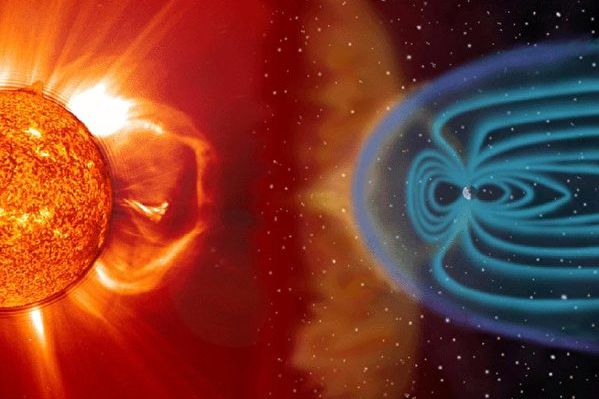On Wednesday, October 9th, US emergency officials and space weather forecasters warned that a severe solar storm could hit Earth starting from Thursday, affecting most parts of the northern continental United States. This intense geomagnetic storm may put pressure on the power grid, disrupt communications, and offer a chance for beautiful auroras to be visible in parts of the US on Thursday and Friday nights.
The National Oceanic and Atmospheric Administration (NOAA) in the United States stated that the geomagnetic storm (caused by energy and particle bursts released from the sun) could start as early as Thursday morning and continue into Friday. NOAA predicts that the geomagnetic activity on Thursday could reach G4 level, the second-highest on NOAA’s scale, indicating a “severe” impact and the potential for “very bright and active” auroras across northern parts of the US.
According to NOAA, this storm may pose risks to critical infrastructure including widespread voltage control problems, power grid failures, satellite navigation errors up to several tens of meters, and disruptions in low-frequency radio communications.
The Space Weather Prediction Center (SWPC) in the US also stated that “geomagnetic storms will affect near-Earth orbits and surface infrastructure.”
This solar storm, moving towards Earth at over 2.5 million miles per hour, with its specific intensity and features, can only be determined once it reaches the Deep Space Climate Observatory (DSCOVR) and the Advanced Composition Explorer (ACE) satellite located about a million miles from Earth.
Shawn Dahl, a service coordinator at the Space Weather Prediction Center, mentioned during a news conference on Wednesday that satellites will measure the speed and magnetic field strength of the solar storm, which is expected to reach Earth 15 to 30 minutes after passing the space observatory.
Dahl noted that the center has informed the Federal Emergency Management Agency, the North American power grid, and satellite operators to prepare for interruptions, particularly in light of the preparations and rescue work for Hurricane “Milton.”
G4-level storms, as per historical data, are quite common during the solar cycle, with G5 level or extreme geomagnetic storms being very rare. Dahl mentioned that there is a 25% chance for this new storm to escalate to G5 level.
Solar activity causes auroras at the Earth’s poles. When high-energy particles from coronal mass ejections reach Earth’s magnetic field, they interact with gases in the atmosphere, creating colorful lights in the sky.
Currently, scientists at the prediction center believe that visible auroras are likely to be seen in the central regions of the eastern states, southern parts of the midwestern United States, reaching as far south as northern California and Alabama. However, Dahl stated that whether this storm will trigger global aurora phenomena like the G5 storm in May remains to be seen. If the storm upgrades to G5, auroras could be visible in southern US states and other parts of the world.
Officials from NOAA recommend monitoring the Aurora Dashboard webpage to check if auroras will be visible in your area. The information on this webpage will be continuously updated.
Last weekend, amateur astronomers in the US observed auroras caused by a G3-level storm shortly after nightfall.
Forecast center officials mentioned that even if colorful auroras are not visible to the naked eye, sensors in cameras and mobile phone cameras can capture them.
The New York City Emergency Management Department (NYCEM) stated that they are monitoring the storm, warning of potential impacts on GPS, power grids, and communications, which could lead to errors or disruptions.
The department advised residents to prepare an emergency plan, including having an AM radio, flashlight, water, and non-perishable snacks in case of power outages. However, NYCEM mentioned that power outages are “unlikely.”
While significant impacts are not anticipated in New York City, NYCEM cautioned that as the intensity of the geomagnetic storm may vary throughout the event, other issues may arise, including increased and more frequent voltage problems and inconsistencies with satellite operations.
NOAA scientists stated that this week’s solar storm will not exceed the storm in May. Prior to this year, the last G5-level storm to hit Earth occurred in 2003, resulting in blackouts in Sweden and damage to power transformers in South Africa.

